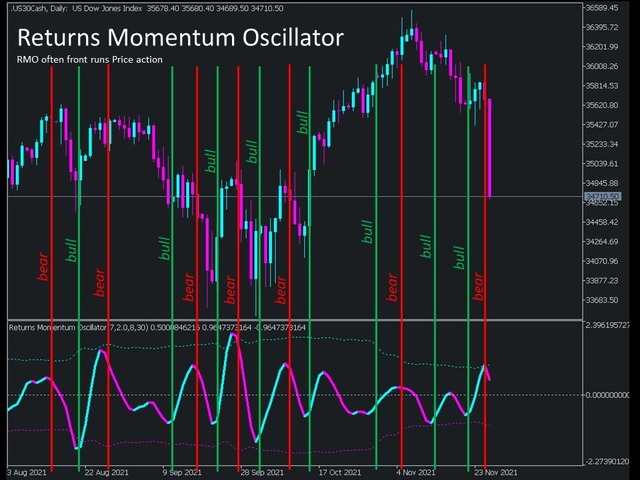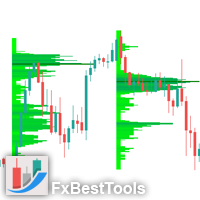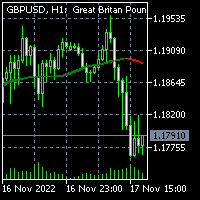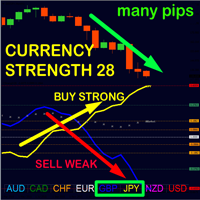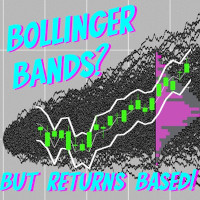Returns Momentum Oscillator RMO
- Indicators
- Florian Nuebling
- Version: 1.0
- Activations: 5
The Returns Momentum Oscillator (RMO) shows the difference of exponentially weighted volatility. It is used to find market tops and bottoms. Volatility comes in waves, and as the Returns often front run price action it gives directional prediction of market movement.
The Oscillator signal is RMSed (root mean squared) to make the distribution closer to Gaussian distribution. While the traditional RSI indicators are often stuck in overbought or oversold areas for a long time, RMSing of the signal gets rid of this. To support this behaviour a high pass filter is applied to filter out higher periods, which should not be considered.
The mean of the indicator signal is the zero line, because it is zero meaned. This avoids skewness of the underlaying indicator distribution.
After the signal processing steps, the indicator value is smoothed with an advanced technic, which smooths the signal with minimal lag.
A standard deviation band is applied to show significance levels of the indicator, which often act as reversal point. It is like the overbought and oversold levels of RSI indicator, but with statistical significance.
As the indicator is nearly normal distributed, due to the signal processing, it can also be used as divergence indicator.
The Input Settings:
Sample Size: Default 7, length of periods back to calculated Volatility
Smoothing Sample Size: default 8, length of periods back to smooth signal with minimal lag
Multiplier: default 2.00 Standard Deviations, Multiplier in terms of standard deviation, to show outliers/possible reversals (line colour change)
Sample Size Bands: Default 30, length of periods back to calculated SD-Bands of RMO to find outliers
High-pass Filter Sample Size: default 50, sample size of high-pass filter to reduce low-frequency noise of the signal
Remark: Indicator is provided for statistical analysis and showing probabilities only and should not be construed as financial advice.




